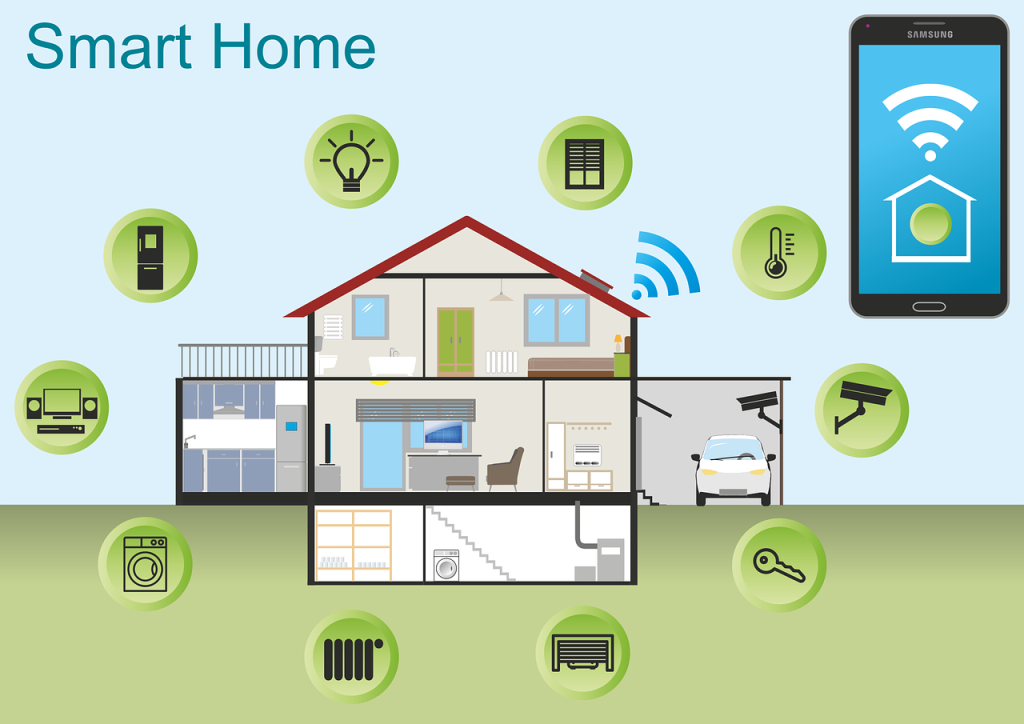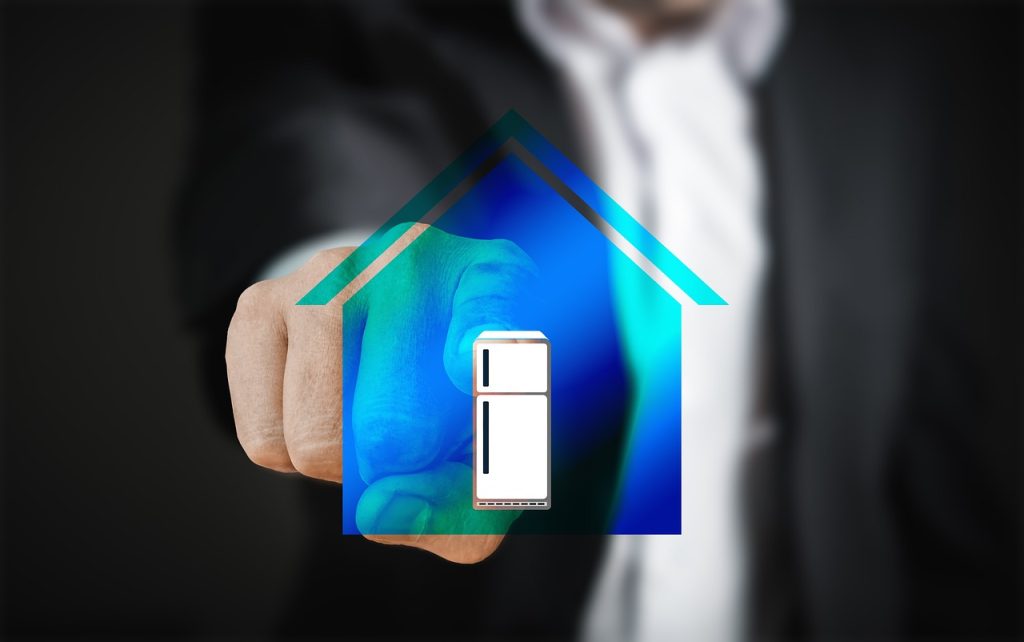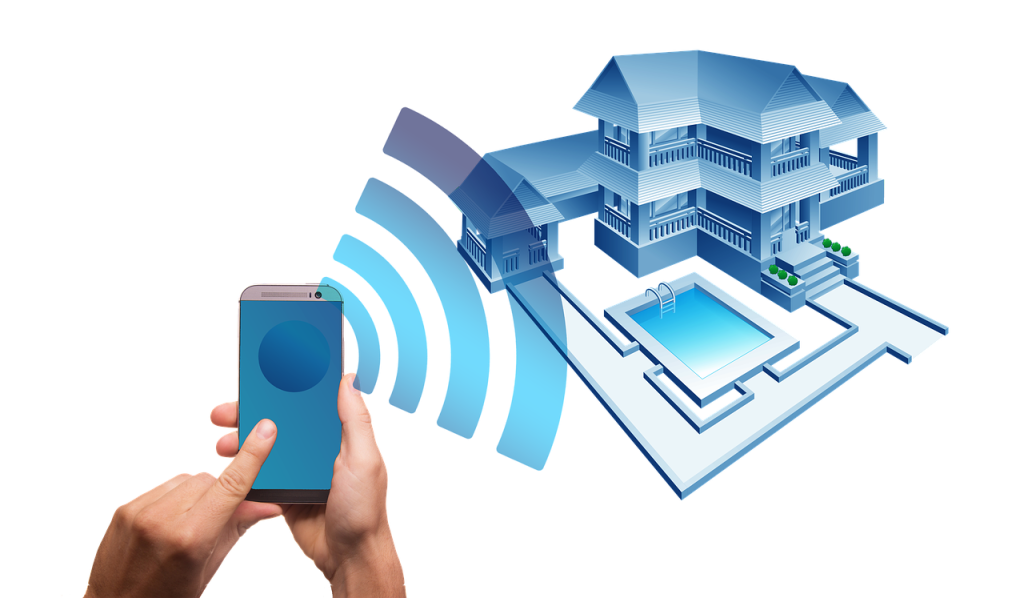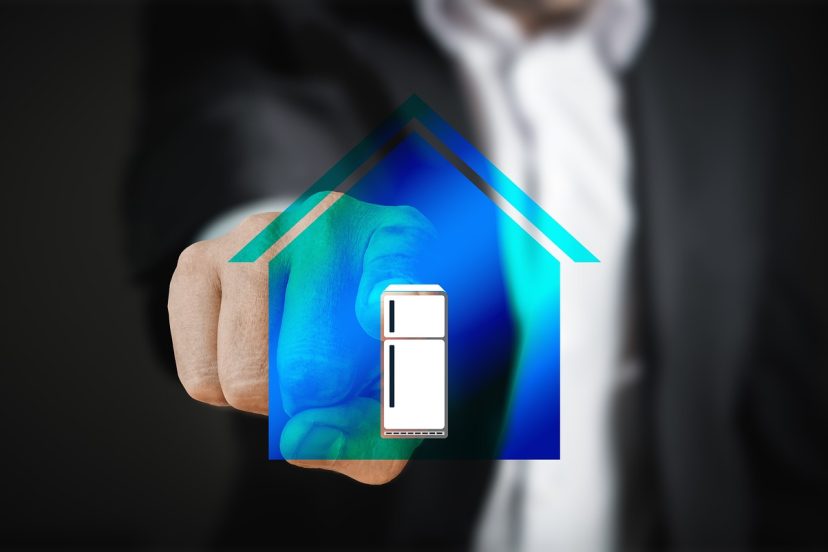Illuminate Your Space with Smart Home Lighting Systems
Are you tired of the traditional, mundane lighting in your home? Look no further than smart home lighting systems to completely transform your space. With these innovative systems, you can effortlessly create the perfect ambiance for any occasion, from cozy movie nights to lively dinner parties. Not only do these systems offer a variety of customizable options, but they also provide energy-efficient solutions that can help you save on your electricity bill. Get ready to illuminate your space and immerse yourself in a world of convenience and style with smart home lighting systems. Smart home lighting systems offer a wide range of benefits that can enhance the overall functionality and ambiance of your home. From energy efficiency to convenience and control, these smart lighting solutions are designed to make your life easier and more enjoyable. In this comprehensive article, we will explore the various benefits of smart home lighting systems, discuss the different types available, provide tips for choosing the right system, guide you through the installation and setup process, and explore the integration and automation capabilities. We will also cover the features and options available with smart home lighting, offer tips and tricks for optimizing your lighting experience, address common challenges and troubleshooting, discuss how to expand your smart home lighting system, and explore future trends in the industry.

Benefits of Smart Home Lighting Systems
Energy Efficiency
One of the key benefits of smart home lighting systems is their energy efficiency. These systems often use LED bulbs, which consume significantly less energy compared to traditional incandescent bulbs. Additionally, smart lighting systems allow you to control and customize your lighting settings, enabling you to adjust the brightness and turn off lights when they are not needed. This level of control can lead to substantial energy savings and help reduce your overall energy consumption.
Convenience and Control
Smart home lighting systems offer unparalleled convenience and control. With the ability to control your lights through a smartphone app or voice commands, you no longer have to manually switch lights on or off. You can customize lighting schedules, create presets for different moods or activities, and even control your lights when you are away from home. This convenience not only adds a level of luxury to your daily life but also enhances safety by giving the impression that someone is home, even when you’re away.
Enhanced Security
Smart home lighting systems can play a significant role in enhancing your home security. By integrating your lighting with other smart home security devices, such as motion sensors and door/window sensors, you can create a more robust security system. For example, you can set up your lights to turn on automatically when motion is detected outside your home or when a door is opened, giving the appearance that someone is present. This can deter potential intruders and provide an added layer of security for your home and loved ones.
Improved Ambiance
Smart home lighting systems allow you to create personalized lighting scenes and moods to suit any occasion or activity. Whether you want to create a cozy and relaxing atmosphere in your living room or set the perfect lighting for a dinner party, smart lighting systems give you ultimate control over the ambiance of your space. With options to dim lights, change color temperatures, and even have color-changing lights, you can transform any room into a versatile and captivating space.
Types of Smart Home Lighting Systems
Smart Bulbs
Smart bulbs are perhaps the most popular and versatile type of smart home lighting system available. These bulbs can be controlled wirelessly using a smartphone app or connected to a smart home hub for more advanced automation capabilities. With smart bulbs, you can adjust their brightness, change the color temperature, and even opt for color-changing bulbs to create captivating lighting effects.
Smart Switches
Smart switches offer a more seamless integration with your existing light fixtures and are a great option if you want to maintain the traditional wall switch experience while still enjoying the benefits of smart lighting. These switches replace your standard wall switches and allow you to control your lights wirelessly. You can still manually control the lights using the switch, but you also have the option to control them through a smartphone app or voice commands.
Smart Plugs
Smart plugs are a convenient option for adding smart lighting capabilities to your existing lamps or light fixtures. These plugs can be inserted into any standard electrical outlet and then used to control the power supply to the connected device. With a smart plug, you can turn your lights on or off remotely, set schedules, and even monitor energy consumption.
Color-Changing Lights
Color-changing lights are a fun and creative way to personalize your home lighting. These lights offer a wide range of colors and can be controlled through a smartphone app or voice commands. Whether you want to set the perfect lighting for a party, create a relaxing ambiance, or simply add a pop of color to your space, color-changing lights provide endless possibilities.
Choosing the Right Smart Home Lighting System
Compatibility
When choosing a smart home lighting system, compatibility is a crucial factor to consider. Ensure that the system you choose is compatible with your existing smart home devices and technologies, such as your smart home hub or voice assistant. Some lighting systems may require additional hardware or software to integrate seamlessly with your setup, so it’s important to research compatibility before making a purchase.
Cost
Cost is another important consideration when selecting a smart home lighting system. The cost can vary depending on the type of system, the number of lights or switches needed, and the brand. Consider your budget and the features you require to make an informed decision. It’s also worth noting that while smart lighting systems may have a higher upfront cost compared to traditional lighting solutions, the long-term energy savings and convenience can outweigh the initial investment.
Scalability
Think about your future needs and whether the lighting system you choose can be easily expanded or integrated with other smart home devices. If you plan to expand your smart home setup in the future, opting for a scalable lighting system can save you time, money, and hassle down the line. Look for systems that offer compatibility with a wide range of accessories and have the ability to sync with other smart home devices.
Installation and Setup
Assessing your Lighting Needs
Before diving into the installation of a smart home lighting system, it’s essential to assess your lighting needs and determine which areas of your home would benefit the most from smart lighting. Consider the rooms or spaces where you spend the most time or where lighting control would be most convenient.
Researching Available Options
Research is key when selecting a smart home lighting system. Consider factors such as compatibility, features, and user reviews to find a system that meets your specific needs. Look for reputable brands and check for any additional requirements, such as needing a hub or specific app, to ensure a smooth installation process.
Determining Installation Requirements
Different smart lighting systems have varying installation requirements. Some systems, like smart bulbs, may require simply screwing in the bulbs and connecting them to your Wi-Fi network. Others, such as smart switches, may require electrical wiring and installation by a professional electrician. Assess the requirements of your chosen system and determine whether you can install it yourself or if you need professional assistance.
Setting up the System
Once you have chosen and acquired your smart home lighting system, the setup process can typically be done following the manufacturer’s instructions. This may involve downloading a smartphone app, connecting the lights or switches to your Wi-Fi network, and configuring any additional settings or customizations. Take your time during the setup process to ensure everything is working correctly and to your preferences.

Integration and Automation
Connecting with a Smart Home Hub
To unlock the full potential of your smart home lighting system, consider connecting it to a smart home hub. A smart home hub acts as a central control point for all your smart devices and allows for more advanced automation and integration. By connecting your lighting system to a hub, you can create more complex lighting schedules, integrate with other smart home devices like door/window sensors or motion detectors, and even control your lights through voice commands.
Creating Automation Rules
Automation is a key feature of smart home lighting systems. Once your system is integrated with a hub or smartphone app, you can create automation rules to suit your needs. For example, you could set your lights to turn on automatically when you arrive home, to gradually dim in the evenings to signal it’s time to wind down, or to turn off automatically when no motion is detected in a room for a certain period. Automation rules can enhance convenience, save energy, and even improve security.
Smart Home Lighting Features
Dimming Capabilities
One of the most appealing features of smart home lighting systems is the ability to dim the lights. Dimming not only allows you to set the perfect ambiance for any activity or mood but can also help save energy. By dimming the lights, you reduce energy consumption while still enjoying adequate lighting for your needs.
Color Temperature Control
Smart lighting systems often offer the option to adjust the color temperature of your lights. Color temperature refers to the perceived warmth or coolness of light, measured in kelvin (K). The ability to control color temperature allows you to create the perfect lighting for any time of day or activity, from warm and cozy lighting in the evenings to cool and energizing lighting in the mornings.
Scheduling and Timers
With smart home lighting systems, you can easily set schedules and timers for your lights. This feature is particularly useful when you’re away from home, as it allows you to create the illusion that someone is present by automatically turning lights on and off at specific times. Scheduling also helps save energy by ensuring lights are only on when needed.
Voice Control
Voice control is becoming increasingly popular and is a convenient way to interact with your smart home lighting system. By connecting your system to a voice assistant device, such as Amazon Alexa or Google Assistant, you can control your lights using simple voice commands. This hands-free control adds an extra layer of convenience and enhances the overall user experience.

Smart Home Lighting Tips and Tricks
Layering Lights for Effect
To create a visually appealing and functional lighting design in your home, consider layering lights. This involves using a combination of different types of lighting, such as ambient, task, and accent lighting, to create depth and dimension. By strategically placing different types of lights in a room, you can achieve a balanced and versatile lighting scheme.
Using Lighting Scenes
Most smart home lighting systems allow you to save and recall lighting scenes. Lighting scenes are pre-set lighting configurations that can be activated with the touch of a button or through voice commands. For example, you can create a “Movie Night” scene that dims the lights, adjusts the color temperature, and turns on specific lights to create a theater-like ambiance. Using lighting scenes saves time and effort when you want to set the perfect lighting for different activities or moods.
Controlling Lights Remotely
Take advantage of the remote control capabilities of your smart home lighting system. Whether you’re away from home or simply in another room, being able to control your lights remotely adds convenience and flexibility to your daily life. Use your smartphone app or voice commands to turn lights on or off, adjust brightness, or change color settings from anywhere.
Common Challenges and Troubleshooting
Connectivity Issues
One common challenge with smart home lighting systems is connectivity issues. If you experience connection problems between your lighting system and your smartphone app or voice assistant, try troubleshooting by checking your Wi-Fi network, ensuring the bulbs or switches are within range, and checking for firmware updates for your devices. In some cases, resetting the devices or contacting customer support may be necessary.
Updating Firmware
To ensure optimal performance and access to the latest features, it’s important to keep your smart home lighting system’s firmware up to date. Firmware updates often address bugs, improve stability, and may introduce new functionalities. Regularly check for firmware updates through the manufacturer’s app or website and follow the instructions to update your devices.
Addressing Compatibility Problems
Compatibility issues can arise when integrating your smart home lighting system with other devices or platforms. If you experience compatibility problems, ensure that all devices are using the latest firmware versions, check compatibility lists or forums for known issues and solutions, or contact customer support for assistance. In some cases, additional hardware or software may be required to bridge the compatibility gap.
Expanding Your Smart Home Lighting System
Adding Additional Smart Bulbs or Devices
Once you have experienced the benefits of smart home lighting, you may want to expand your system by adding more smart bulbs or devices. Whether you want to light up additional rooms or create a more comprehensive lighting scheme, adding more devices is typically straightforward. Simply follow the manufacturer’s instructions to add new bulbs or devices to your existing system.
Integrating with Other Smart Home Devices
Smart home integration is a key advantage of modern technology. By integrating your smart home lighting system with other smart devices, such as thermostats, security systems, or voice assistants, you can create a fully synchronized and automated smart home experience. Explore compatibility options and consider how integrating your lighting system with other devices can enhance your lifestyle and the overall functionality of your home.
Future Trends in Smart Home Lighting
Integration with Voice Assistants and AI
The future of smart home lighting is centered around integration with voice assistants and artificial intelligence (AI). As voice assistants become more advanced and prevalent in households, the ability to control your lights through voice commands will become even more seamless and intuitive. AI will also play a role in optimizing energy usage and automatically adjusting lighting settings based on user preferences and occupancy patterns.
Advancements in Energy Efficiency
Continued advancements in technology will lead to even greater energy efficiency in smart home lighting systems. Manufacturers are constantly working on improving the efficiency of LED bulbs, reducing power consumption of control devices, and developing intelligent algorithms to optimize energy usage. As energy efficiency becomes a focus, we can expect to see smarter and greener lighting solutions for our homes.
In conclusion, smart home lighting systems offer numerous benefits, including energy efficiency, convenience, enhanced security, and improved ambiance. With various types of smart lighting systems to choose from, such as smart bulbs, switches, plugs, and color-changing lights, you can find the perfect solution to meet your specific needs. When selecting a system, consider compatibility, cost, and scalability. The installation and setup process typically involves assessing your lighting needs, researching options, determining installation requirements, and setting up the system. Integration with a smart home hub and creating automation rules can further enhance your lighting experience. Features such as dimming capabilities, color temperature control, scheduling, and voice control allow for personalized and convenient lighting control. Tips and tricks like layering lights, using lighting scenes, and controlling lights remotely can elevate your lighting design. Common challenges such as connectivity issues, firmware updates, and compatibility problems can be addressed through troubleshooting and updates. Expanding your smart home lighting system is as simple as adding more smart bulbs or integrating with other smart devices. Future trends in smart home lighting include integration with voice assistants and AI, as well as advancements in energy efficiency. With all these possibilities, smart home lighting systems offer a bright and exciting future for homeowners.




